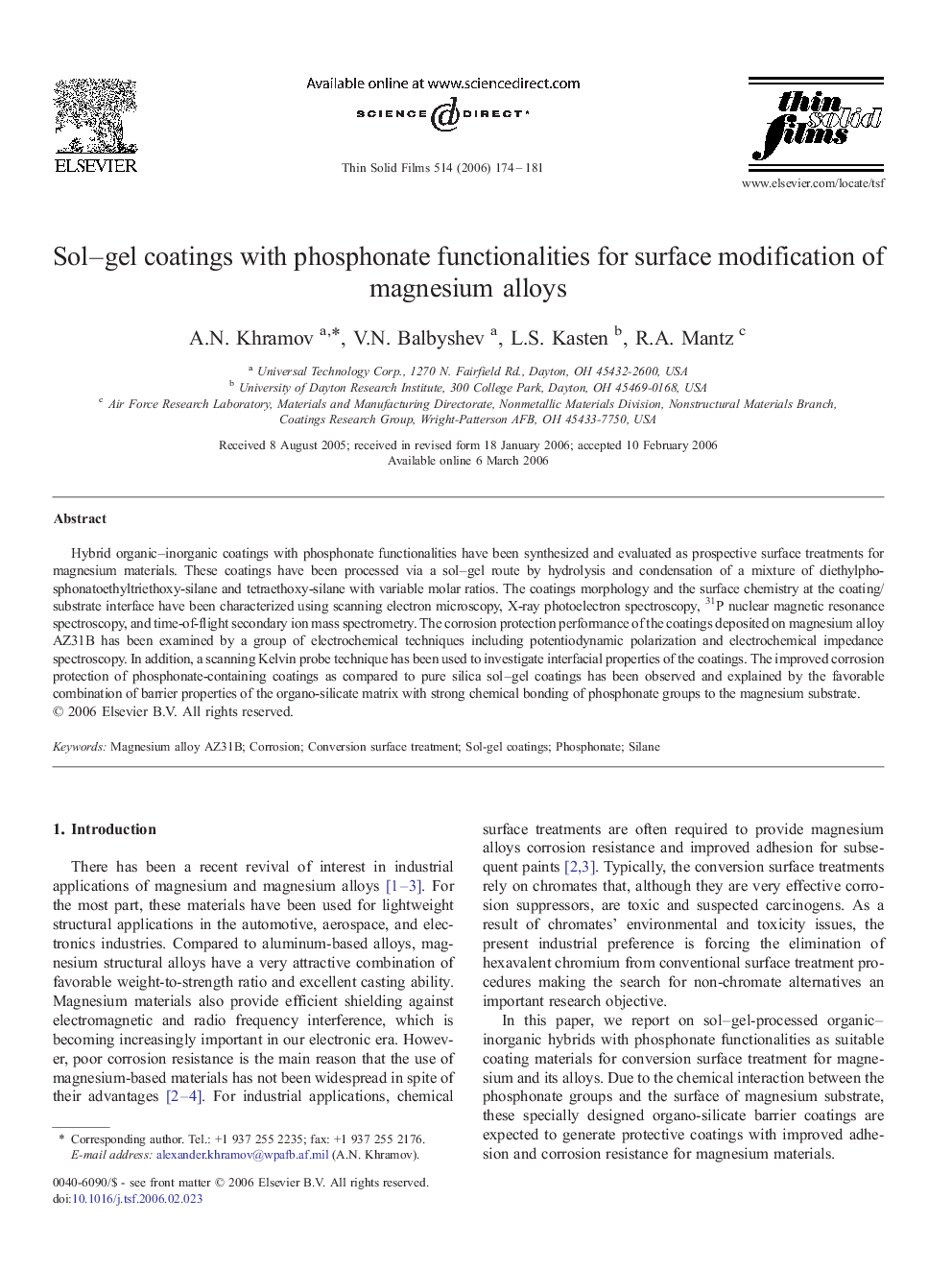| Article ID | Journal | Published Year | Pages | File Type |
|---|---|---|---|---|
| 1675941 | Thin Solid Films | 2006 | 8 Pages |
Hybrid organic–inorganic coatings with phosphonate functionalities have been synthesized and evaluated as prospective surface treatments for magnesium materials. These coatings have been processed via a sol–gel route by hydrolysis and condensation of a mixture of diethylphosphonatoethyltriethoxy-silane and tetraethoxy-silane with variable molar ratios. The coatings morphology and the surface chemistry at the coating/substrate interface have been characterized using scanning electron microscopy, X-ray photoelectron spectroscopy, 31P nuclear magnetic resonance spectroscopy, and time-of-flight secondary ion mass spectrometry. The corrosion protection performance of the coatings deposited on magnesium alloy AZ31B has been examined by a group of electrochemical techniques including potentiodynamic polarization and electrochemical impedance spectroscopy. In addition, a scanning Kelvin probe technique has been used to investigate interfacial properties of the coatings. The improved corrosion protection of phosphonate-containing coatings as compared to pure silica sol–gel coatings has been observed and explained by the favorable combination of barrier properties of the organo-silicate matrix with strong chemical bonding of phosphonate groups to the magnesium substrate.
